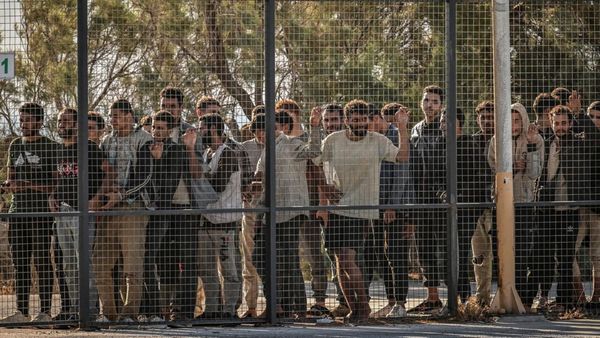When floodwaters destroyed hundreds of Queyea Tuazama's carefully planted crops in one of Australia's booming outer metropolitan areas, she knew that wouldn't be the last of it.
Counting the costs, she decided to come up with a contingency plan against future disasters amid a changing climate.
"Everything was flooded, it was covered… we couldn't get in and we lost everything," she said of the community farm in Melbourne's outer south-east.
"Now we are using mostly wicking beds. We can move those beds and have it in a safe place, instead of losing all our crops and starting from nothing."
It comes as the peak body for local governments in Australia's outer metropolitan areas urged the federal government to invest in climate resilience across the nation's rapidly-growing outer suburbs.
Releasing its pre-budget pitch to the government, the National Growth Areas Alliance (NGAA) found 5.3 million Australians living in major growth corridors would be harder hit by climate change than inner-city dwellers.
The submission report warned residents in outer metropolitan areas would likely see a "significant increase" in emergencies if suburbs kept being built on land at high risk of fire or flood.
Building on flood and fire prone land
Across the nation, Australia's sprawling outer suburbs are booming.
Twenty per cent of Australia's population lives in fast-paced growth areas around the nation's major cities.
These areas are growing nearly three times as fast as the rest of the country, with outer suburban growth areas increasing by 34 per cent in the past decade, while Australia's overall population grew by just 15 per cent.
Population estimates forecast outer metropolitan areas will be home to 7.5 million people in the next 15 years.
NGAA executive officer Bronwyn Clark said the dizzying pace of growth requires careful thinking and urgent action.
"We're building new developments and thousands and thousands of houses every year in a really unsustainable way," she said.
"We're building right on the outskirts of the city in places more vulnerable to climate change and natural disasters and yet we're putting thousands and thousands of families into new houses there every year.
"So we're putting people into places at risk of fire and flood and we're not investing in the infrastructure to get people out of those areas when there is an emergency."
A looming 'national crisis'
Australia's growth suburbs are typically hotter due to a lack of established vegetation and an excess of hard, concrete surfaces.
In many areas, infrastructure is underfunded and communities are under-serviced, fuelling a reliance on private vehicles as transportation.
The report found long term federal funding was needed for roads, train lines, footpaths and bikeways in growth areas, to combat growing congestion and ensure liveable communities.
"Trees take time to grow," Ms Clark said.
"We've seen in western Sydney in Penrith for example, they've had summer days over 50 degrees.
"When you look at the number of [houses with] black roofs… we're really just building up the temperature so it's definitely hotter in these new suburbs."
Community garden coordinator Max Godber said shared green spaces have never been more important in outer suburban areas.
"What was once a diverse abundant farmland is now turning into this barren landscape of houses, tarmac, asphalt and concrete," he said, describing Melbourne's outer suburbs.
"Living in these areas can be quite lonely and people can feel quite isolated.
"A community garden brings people together… and recognises there is community. That's what neighbourhoods are all about."
Andrew Butt from RMIT's Centre for Urban Research said planning for climate change was a vital issue, especially in growth areas.
"These are highly transport dependent, energy-intensive sorts of neighbourhoods, where we're looking to make shifts like walking more, looking at passive transport," he said.
"We need to make sure communities in those areas are less exposed to risks and shocks particularly around things like extreme weather."
He said a national approach to sustainable design, tree planting and increasing public transport would help.
The report identified priority infrastructure projects for major freeways and road links in six locations across Victoria, two in NSW, two in South Australia and four in Western Australia.
The NGAA said a dedicated federal minister was also needed to consider the multitude of issues facing millions of residents in Australia's outer metropolitan areas.
"Strong leadership is required at federal level to address this national crisis," it said.
The Federal Minister for Infrastructure, Transport, Regional Development and Local Government Catherine King has been contacted for comment.







